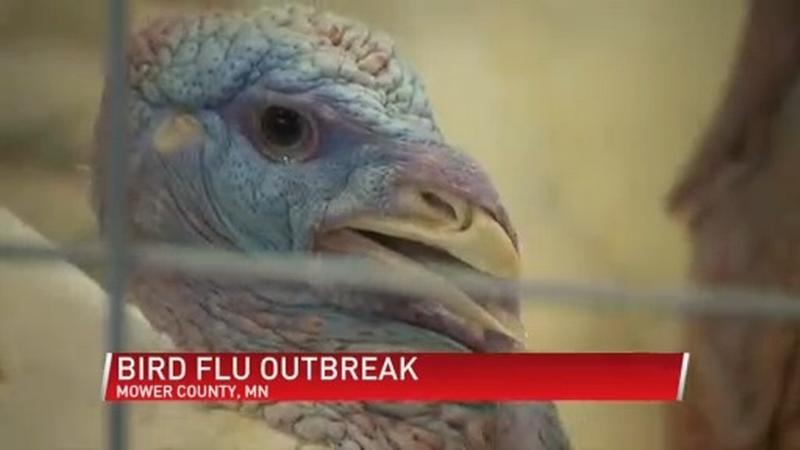Bird Flu identified in Mower County
[anvplayer video=”5099171″ station=”998128″]
(ABC 6 News) – The H5N1 Highly Pathogenic Avian influenza (HPAI), also known as bird flu, has been found in Meeker, Mower, and Stearns Counties.
It has also been found in nearby states like Iowa and Wisconsin, so some farmers said the virus has been on their radar for a while.
The Minnesota Board of Animal Health counted 17 birds in Mower County affected by the virus.
"If it turns up in your flock on any of your animals, they do have to take the whole flock — which isn’t something you ever want to have to happen," said Emily Mclaughlin, owner of Tomte Grove.
This strain of bird flu infects small and large commercial farms alike.
"Especially since we’re a small farm, all of our birds are treated very well and are more pets than anything," Mclaughlin said.

Tomte Grove is a farm in neighboring Olmsted County. They’re limiting who is allowed to visit their coops to try and slow the spread. Local farmers are on high alert.
"Unknowingly we could be carrying it to our coops or our neighbor’s house," said Abby Schuft, an extension educator at the University of Minnesota extension.
In Meeker and Stearns Counties commercial turkey flocks caught the virus — meaning thousands of birds were affected then depopulated or euthanized.
Governor Tim Walz called in an emergency response team from the United States Department of Agriculture to help contain the outbreak.
"You’re going to want to minimize who has contact with your birds," Schuft said.
However, according to the CDC, the chance of humans catching bird flu is low. So far there is only one reported human case of this strain. A person in the United Kingdom reported no symptoms.
"The birds that have been confirmed to have the virus that is being euthanized do not enter the food chain," Schuft said.
Experts are saying widespread bird flu could create a poultry shortage and cause prices to increase at grocery stores. Governor Walz’s office said the USDA emergency team will be here for at least three weeks and will work alongside farmers to quarantine infected flocks and monitor the spread.